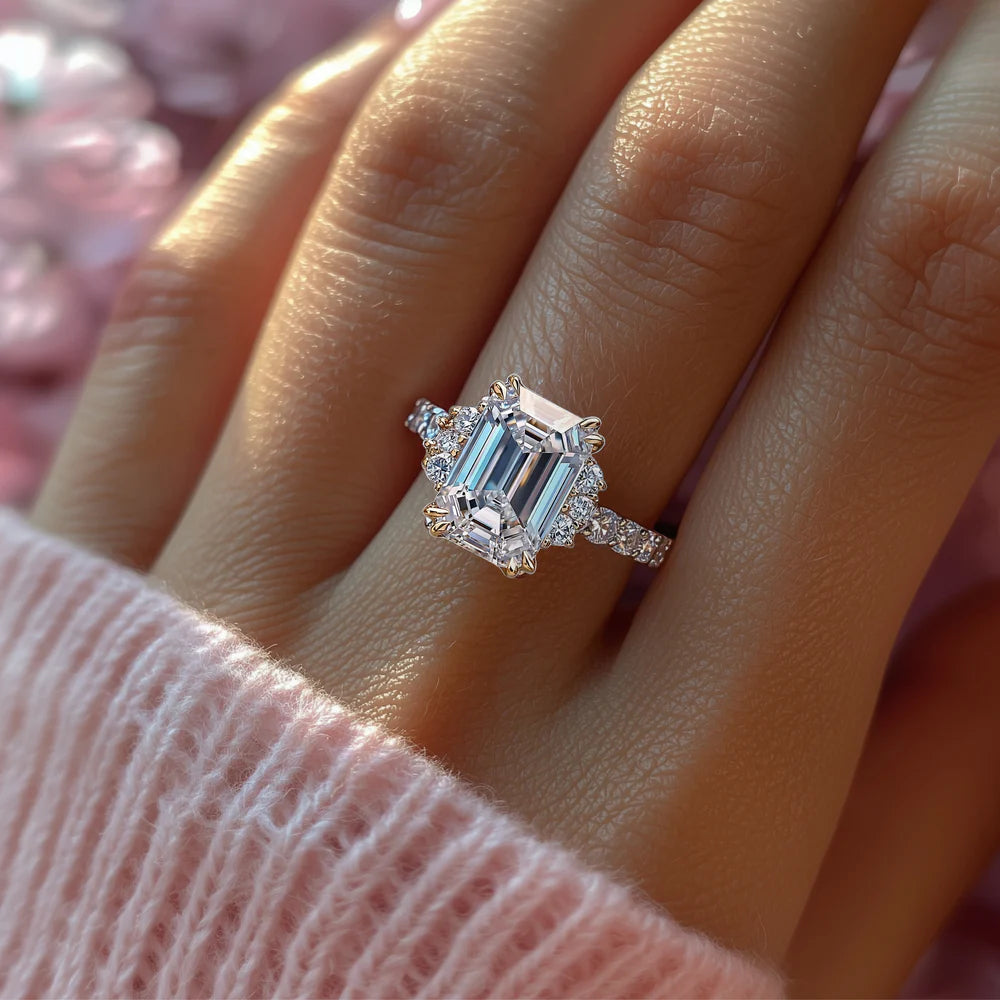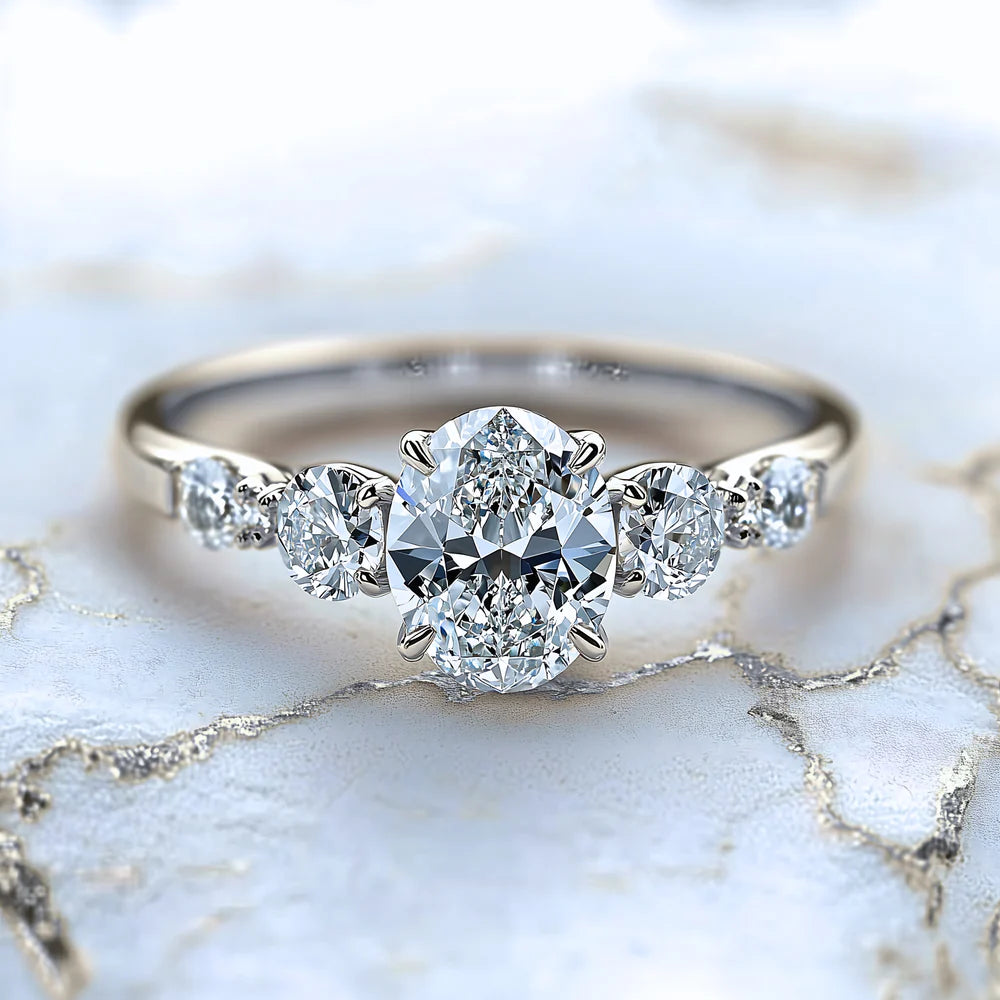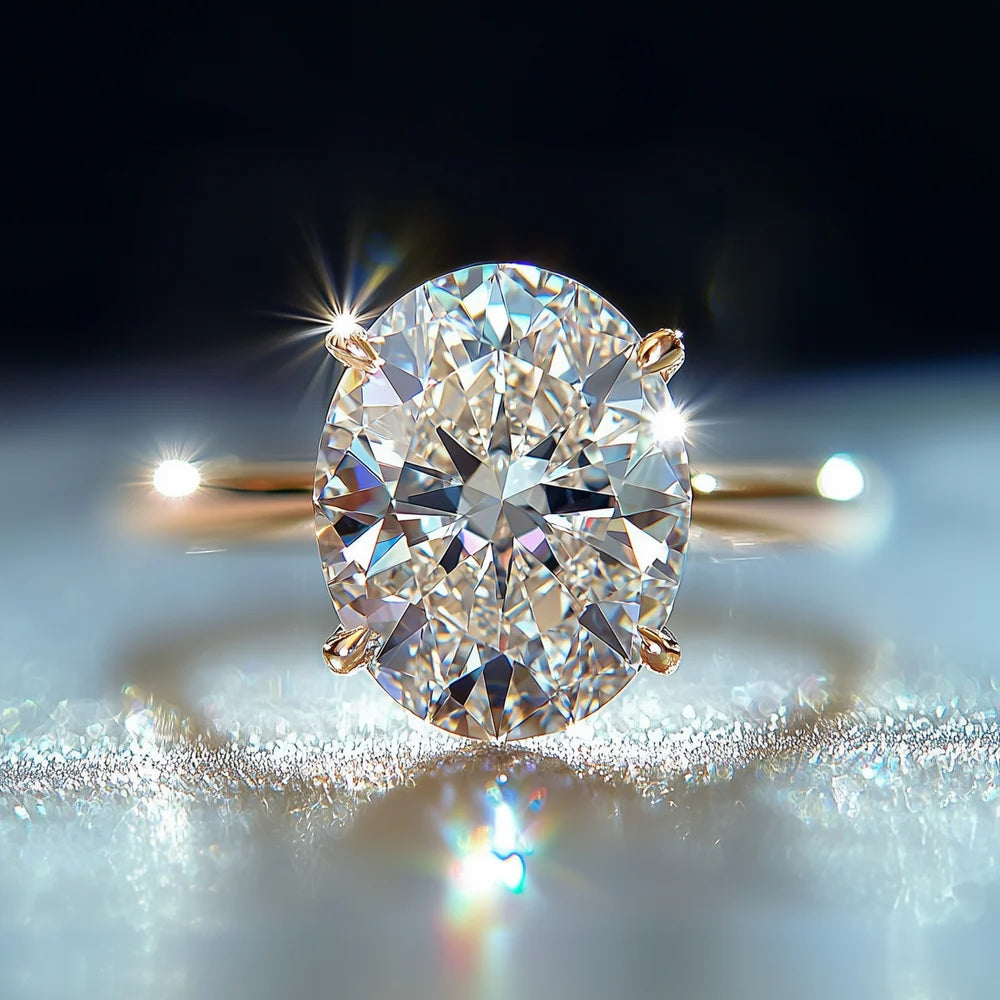
How Moissanite Outshines Diamond in Brilliance and Affordability
When shopping for a dazzling, affordable gemstone, many people automatically think of diamonds. But a growing number of buyers are discovering that moissanite, a lab-grown gemstone, offers even more sparkle and beauty than diamonds—at a fraction of the price. This article breaks down how moissanite surpasses diamonds in both brilliance and affordability, making it an increasingly popular choice for engagement rings, promise rings, and other fine jewelry.
1. Brilliance: How Moissanite Reflects More Light Than Diamond
Brilliance is often the top priority when choosing a gemstone. The brighter and more sparkly the stone, the more captivating it looks on the hand. Moissanite has a unique advantage here.
Refractive Index: Moissanite Bends Light Better
The refractive index (RI) is a measure of how much light a gemstone can bend. A higher RI means more light refraction, creating a brighter sparkle. Moissanite’s RI is 2.65-2.69, which is higher than diamond’s 2.42.
- Moissanite: 2.65-2.69 RI – higher refraction, leading to intense sparkle. See our oval-cut moissanite rings for examples.
- Diamond: 2.42 RI – offers a classic sparkle but with less refraction. Explore the difference in our best-selling moissanite rings.
This higher refractive index means that moissanite reflects more light than diamonds, resulting in a brighter, more brilliant appearance. This quality is especially noticeable in well-lit or natural sunlight environments, where moissanite’s sparkle becomes particularly vivid.
Dispersion: The Secret to Moissanite’s Rainbow Effect
Dispersion, also known as fire, refers to how well a gemstone splits light into spectral colors (the colors of the rainbow). Moissanite has a dispersion rating of 0.104, more than double that of diamond’s 0.044. This high dispersion gives moissanite a rainbow-like sparkle, which some describe as "flashy" and "vibrant."
- Moissanite: 0.104 dispersion – produces a vivid, rainbow-like effect in different lighting. Check out our emerald-cut moissanite rings for an example of this effect.
- Diamond: 0.044 dispersion – emits a more subtle sparkle with fewer colors.
This colorful fire is what sets moissanite apart and makes it incredibly eye-catching, especially for those who love a gemstone with a unique, attention-grabbing look.
2. Affordability: Moissanite’s Unmatched Value
One of the most appealing aspects of moissanite is its cost. Moissanite offers the look of a diamond at a fraction of the price, making it a highly attractive option for budget-conscious buyers without compromising on appearance or quality.
Price Comparison
Here’s a typical comparison in pricing for a 1-carat stone:
- Moissanite: Around $600 - $1,000 depending on quality and cut. See our newly released moissanite rings for affordable options.
- Diamond: Around $5,000 or more for a high-quality 1-carat diamond.
This price difference is due in part to moissanite’s lab-grown production process, which bypasses the costly mining process associated with diamonds. Moissanite’s affordability means that buyers can invest in a larger stone or a more elaborate setting for the same budget, allowing for more flexibility and customization in their jewelry choices.
Why Moissanite’s Affordability Doesn’t Compromise Quality
The lower price of moissanite isn’t a reflection of lesser quality; rather, it’s due to the lab-grown nature of moissanite, which allows for consistent, controlled production. This process not only ensures high quality but also avoids the ethical and environmental issues associated with diamond mining.
Bottom Line: Moissanite delivers on both beauty and value, giving buyers the opportunity to invest in a stunning piece of jewelry without the financial burden of a diamond. Browse our moissanite engagement rings for affordable yet dazzling options.
3. Ethical and Environmental Impact: Moissanite’s Sustainable Sparkle
In today’s world, many buyers are concerned with the ethical and environmental impact of their purchases. Diamonds, especially natural ones, are often associated with ethical and environmental issues, such as conflict mining and ecological destruction from mining operations.
- Moissanite: As a lab-grown gemstone, moissanite is entirely conflict-free and has a minimal environmental footprint. No mining is involved, making it a sustainable and ethical choice. Discover more in our eco-friendly moissanite bands.
- Diamond: Diamond mining can cause environmental damage, such as deforestation and water pollution. Conflict diamonds, also known as "blood diamonds," raise ethical concerns as well.
Choosing moissanite allows buyers to enjoy their jewelry with a clear conscience, knowing that their stone is both beautiful and responsibly sourced.
4. Durability: Both Stones Are Built to Last
For jewelry that’s worn daily, such as engagement rings, durability is key. Both moissanite and diamond are highly durable, making them excellent choices for long-term wear.
-
Diamond: Diamond scores a perfect 10 on the Mohs scale, making it the hardest natural material. This means diamonds are extremely resistant to scratches and ideal for daily wear.
-
Moissanite: Moissanite ranks at 9.25 on the Mohs scale. While slightly softer than diamond, it’s still one of the hardest gemstones available and highly resistant to scratches and chips. Explore durable styles in our custom moissanite rings.
Which Lasts Longer? While diamond is technically harder, moissanite’s durability is more than sufficient for everyday wear, meaning both stones are well-suited for engagement rings or other frequently worn jewelry.
5. Moissanite vs Diamond: Which is Right for You?
Both moissanite and diamonds offer unique advantages. Here’s a quick summary to help you decide which is better for your needs:
| Aspect | Moissanite | Diamond |
|---|---|---|
| Brilliance | Higher refractive index, more vibrant sparkle | Classic white sparkle |
| Dispersion (Fire) | Strong rainbow effect (0.104 dispersion) | Subtle rainbow effect (0.044 dispersion) |
| Price | 80-90% less expensive than diamonds | Expensive; higher price per carat |
| Ethics | Lab-grown, conflict-free, eco-friendly | Concerns with mining and ethical sourcing |
| Durability | 9.25 on Mohs scale | 10 on Mohs scale |
Why More People Are Choosing Moissanite
Moissanite’s incredible sparkle, affordability, and ethical production make it a standout choice for modern buyers looking to maximize both beauty and value. While diamonds hold traditional appeal, moissanite offers an equally stunning appearance at a fraction of the cost, without the ethical or environmental concerns.
Conclusion: Moissanite – A Brilliant, Affordable Alternative to Diamond
For those seeking a high-quality, eye-catching gemstone without the high price tag, moissanite is a fantastic choice. Its brilliance, rainbow-like sparkle, and affordability make it a gemstone that rivals diamond in appearance while outshining it in value and ethics.
Ready to experience the brilliance of moissanite? Explore our best-selling moissanite rings, newly released styles, and engagement rings collection to find a stunning, affordable alternative to traditional diamond jewelry.



Leave a comment
This site is protected by hCaptcha and the hCaptcha Privacy Policy and Terms of Service apply.